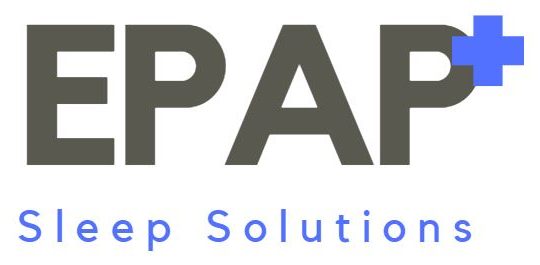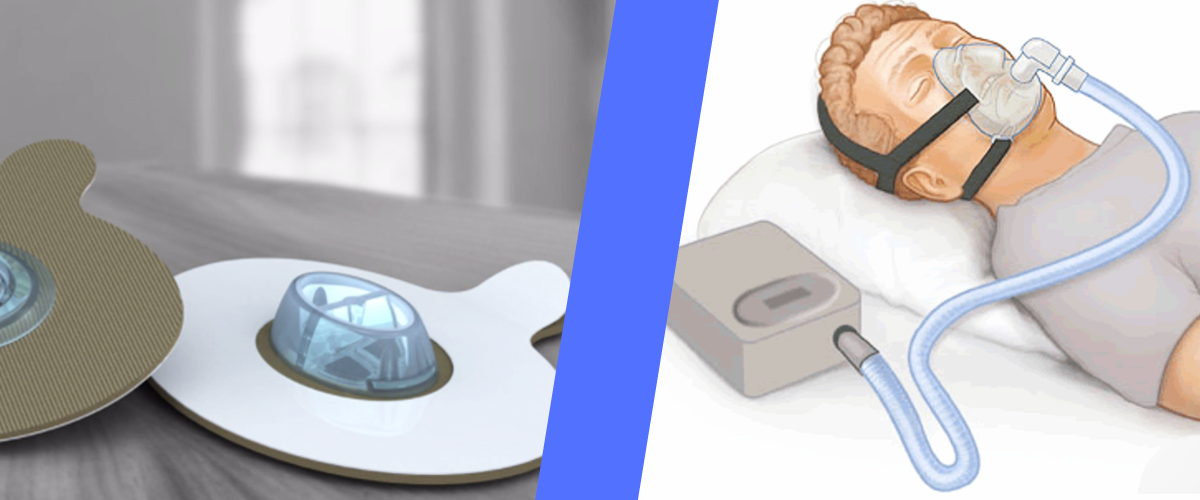When it comes to sleep apnea, everyone wants to know what the best solution is. The answer is that your ideal treatment depends on the sleep apnea you have.
Some people experience relief from the use of nasal strips, broncho-dilators, nasal sprays, and other easy to use remedies. For those who do not experience relief from one of these remedies, there are EPAP and CPAP machines. We have all heard the wonders of how these devices work, but what is the difference between the two?
What is EPAP and How is it Used?
An EPAP, or Expiratory Positive Airway Pressure, is a unique technology, is used to create pressure during the exhalation process. This increases the effectiveness during exhalation, providing smoother breathing, which reduces the symptoms of sleep apnea.
The EPAP device fits over both nostrils. When air is drawn into the lungs on inhale the valve is triggered to allow normal inhalation. When you are finished breathing in, the valve device closes over the nostrils and applies slow, gentle pressure. This pressure pushes open the airway, which reduces the obstruction causing apnea.
The EPAP machine causes none discomfort to the wearer. It is comfortable to use and the EPAP works as soon on. Unlike some of the sprays, you have none known side-effects. EPAP provide a pressure positive airway when air is pushed out on exhale, keeping your airway open and eliminating the symptoms associated with sleep apnea.
Positives of Using an EPAP Machine
- EPAP is a new technology, which shows promise in replacing the CPAP machine most times because it reduces the symptoms associated with sleep apnea.
- Instead of artificial pressure, the natural pressure created by your own breathing is used to provide pressure to keep your airway open.
- EPAP is quick and easy to use without sophisticated machines involved.
Negatives of Using an EPAP Device
- EPAP is not effective where nasal obstruction is a problem.
What is CPAP and How is it Used?
CPAP creates Continuous Positive Pressure airway. This allows the airway to remain open at all times by pushing a small stream of air into the throat, keeping the airway open at all times. This can treat obstructive sleep apnea where the airway either collapses or closes during sleep.
CPAP even keeps the airway open in sleep apnea situations where the airway collapses during inhalation. Sleep apnea that causes the airway to collapse causes multiple wakeful episodes during the night, leading to sleepiness the following day. Since the airway is kept open during the day, it can reduce wakeful episodes, and reduce the amount of tiredness the following day.
Using a CPAP machine is not side-effect free. Some people experience undesirable side-effects like bloating in the abdomen, skin irritation in the area the mask fits, and dry nose and throat for a while after waking.
Many people find the CPAP machine to be a hindrance, and they find it annoying. Depending on the way you sleep, a facemask is used and sometimes, a pillow mask is used. Many people find it to be more of a hassle than using an EPAP machine.
Positives of Using a CPAP Machine
- CPAP is FDA approved and has been proven as an effective treatment for the condition sleep apnea, even if it is obstructive.
- CPAP reduce sleepiness during the day for people who are plagued by sleep apnea.
- · It is a non-invasive, non-surgical for sleep apnea.
Negatives of Using a CPAP Machine
- Using a CPAP machine requires you to use an awkward feeling mask and a machine.
- The side-effects are undesirable and can become very irritating.
- The equipment setup can be time-consuming.
The Key Difference Using an EPAP and a CPAP Device
Both CPAP and EPAP are used to achieve the same result. They can treat a wide number of sleep apnea problems and they work in two different ways. EPAP provides the user with less side-effects than a CPAP machine and is an effective way to prevent airway collapse, which is a serious problem for sleep apnea patients. EPAP also provides more comfort and convenience for sleep apnea patients.
The CPAP machine forces you to use both a machine and a mask that can be uncomfortable. It also hinders the patient by causing several undesirable, but not unmanageable effects which are eliminated by the use of EPAP devices.
For patients with the condition suffering from obstructive forms of sleep apnea, which causes restriction of breathing, both an EPAP and a CPAP can assist in creating pressure positive airway pressure, which assists in more comfortable, safer breathing while sleeping. The main difference is that a CPAP machine pushes pressure into the airway using pressure from the machine. EPAP uses the natural pressure created when you exhale to assist in keeping the airway open during breathing, which is more desirable to both patients and doctors.

